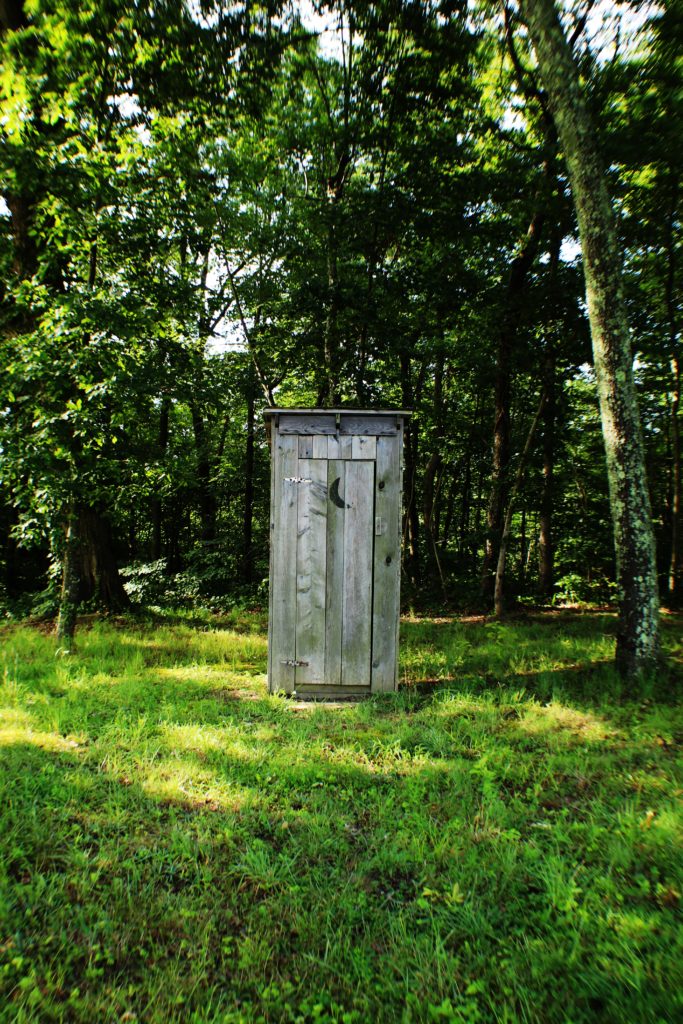This article by Ray Spitzenberger first appeared in IMAGES for August 6, 2020, East Bernard Express, East Bernard, Texas.
Not too long ago during the peak of the Coronavirus pandemic, when there was a severe shortage of toilet paper, some folks were having panic attacks. It was like, ‘How can life go on without toilet paper?’ My initial response was to chuckle, because I thought of the good old days, growing up in the late 1930’s and early 1940’s in the wonderful rural community of Dime Box, Texas, where everybody had an outhouse or privy equipped with a Sears Roebuck Catalogue and a stack of old newspapers. We didn’t have an indoor toilet with tissue paper luxury until my family moved to Giddings when I was 14.
When I moved to Wharton County eighteen years later (50 years ago), many of my new friends, especially those who grew up on a farm, shared good-old-days outhouse stories with me. Everybody had a story, so I know I’m not the only one who still considers indoor plumbing and toilet paper great luxuries.
As my grandparents’ generation passed away, and my parents’ generation grew old, I realized how nostalgic my parents were about that important building located an appropriate distance from the house. My mother was obsessed with the past (idealizing it), and the past included the family outhouse which belonged to her family for several generations.
We had a more modernized privy where we lived in town, but out on the farm, my grandparents’ privy had been one of the outbuildings on my great grandmother’s farm in the area between Lincoln and Lexington, Texas. It was considered very upscale in the late 1800’s, because all the other outbuildings were log structures, and it was made of planks.
Because it belonged to my maternal grandmother after her mother’s death, she had it moved to the farm in Dime Box. As a child, my mother grew up using this family “meditation shed” (as I used to call it). Over the years, it had been patched up quite a lot, so it wasn’t the prettiest structure you ever saw.
To make a long story short, — and this story with all the details would be quite long, — after my grandparents moved to town upon retiring from farming, the outhouse went with them. That seemed an appropriate way to preserve the family history since they built their retirement house in town out of the lumber from my grandmother’s old Lincoln/Lexington farmhouse. Indoor plumbing had come to Dime Box by then, but they wanted to preserve the old ways.
Let me fast-forward a bit at this point: My grandparents die. My aunt owns the house. She adds indoor plumbing. She keeps the “historic” outhouse standing for sentimental reasons. My aunt dies. My mother owns the house. My mother and father move into the house. My parents add a second indoor bathroom. My mother plants flowers around the not-in-use privy.
It is at this point that my mother tells me she wants to have a Texas Historical Marker placed on the outhouse, since it had originally belonged to my great grandparents and was part of Texas history. At first I thought she was joking, but I knew my mother well enough to know she was serious! Which made the situation even funnier.
Fortunately, she didn’t know how to apply for a Texas Historical Marker, and her next door neighbor was not happy with the outhouse so near his home, and began to complain about it. This led to an on-going squabble between Mama and her neighbor about the location of the outhouse, the details of which she would relate to me in her weekly letters. Finally, the two of them had a strongly worded verbal exchange that ended with his warning her he was going to take a long pole and push over the privy, to which she threatened to sue him if he did, informing him the old building was worthy of a Texas Historical Marker! Their impasse resulted in his erecting a wooden fence between the two properties, the fence higher when even with the privy.
No, that’s not the end of the story. Sometime after Mama died and we readied the place to sell it, we noticed the outhouse was gone! I found it behind the barn, neatly stacked in layers of planks, the sitting board with two holes on top.
-o-
Ray Spitzenberger is a retired WCJC teacher and Lutheran Pastor, and the author of two books, Open Prairies and It Must Be the Noodles.

